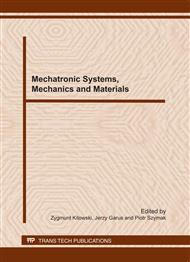p.3
p.11
p.20
p.27
p.39
p.46
p.56
p.64
Design and Analysis of Model Following Control Structure with Nonlinear Plant
Abstract:
Abstract. Linearization methods of the object: input-state and input-output linearization are used usually in a standard feedback control system. However, these systems are sensitive to the changes of nonlinear characteristics of the plant. These changes can be compensated in two types of control systems: in the model following control (MFC) and adaptive. The article presents the first solution and contains: miscellaneous structures of linear control systems with model following, brief description of the linearization’s methods, simulation example of the course control of vessel and the advantages of this solution.
Info:
Periodical:
Pages:
3-10
Citation:
Online since:
November 2011
Authors:
Price:
Сopyright:
© 2012 Trans Tech Publications Ltd. All Rights Reserved
Share:
Citation:


